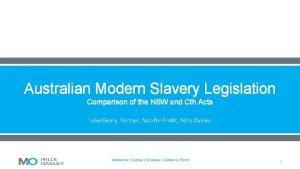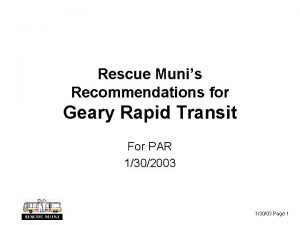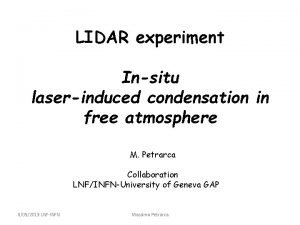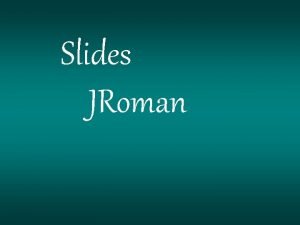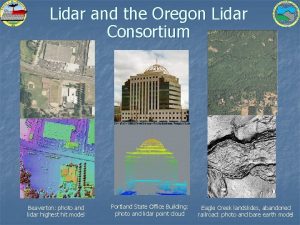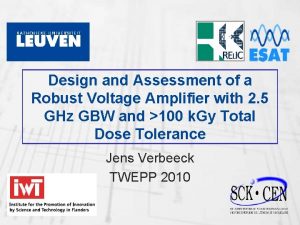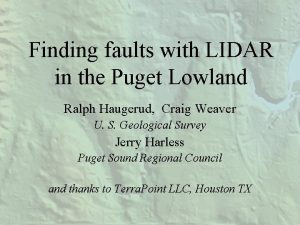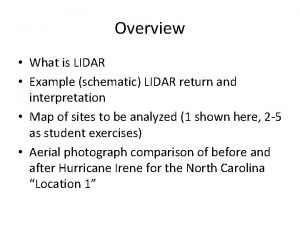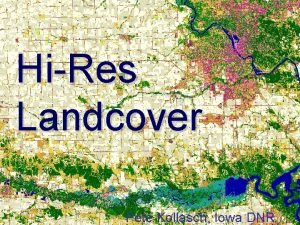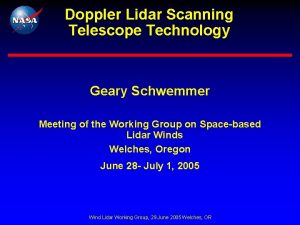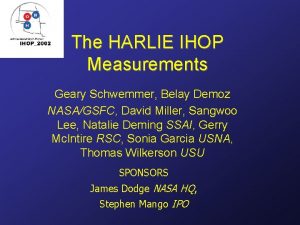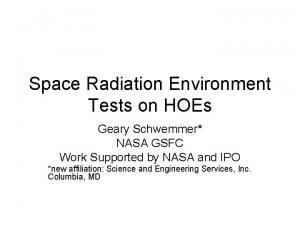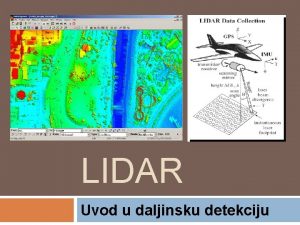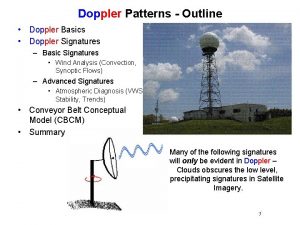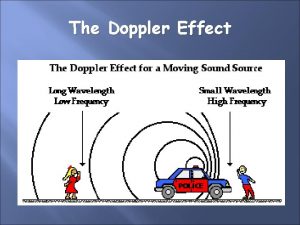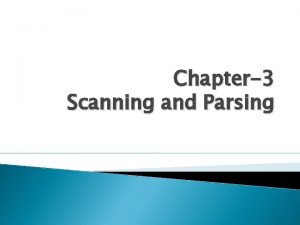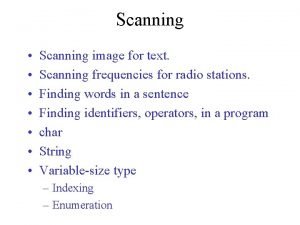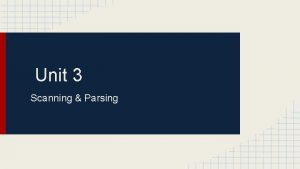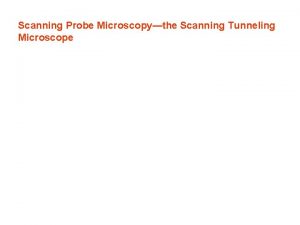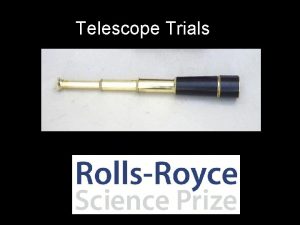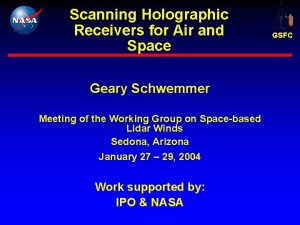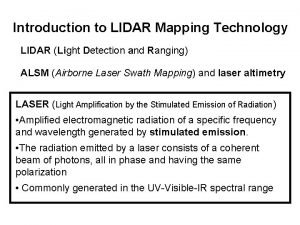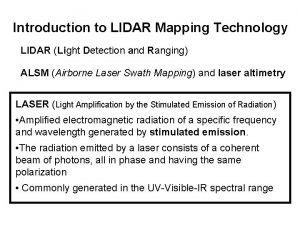Doppler Lidar Scanning Telescope Technology Geary Schwemmer Meeting















- Slides: 15

Doppler Lidar Scanning Telescope Technology Geary Schwemmer Meeting of the Working Group on Space-based Lidar Winds Welches, Oregon June 28 - July 1, 2005 Wind Lidar Working Group, 29 June 2005 Welches, OR

Topics • • • Requirements Constraints Approaches Comparisons Roadmaps Wind Lidar Working Group, 29 June 2005 Welches, OR

Requirements • • Narrow field of view Large collecting area Large off-nadir scan angles (~30 -50°) Step-stare preferred over continuous scanning Rapid slew 2 ~orthogonal looks into each sample volume Laser bore-sighting Wind Lidar Working Group, 29 June 2005 Welches, OR

Constraints • • Volume Mass Power Vibration Torque Momentum compensation Space environment Wind Lidar Working Group, 29 June 2005 Welches, OR

Approaches • Conventional telescope w/ rotating mount • Multiple telescopes • Scanning flat mirror • Rotating wedge prism • Rotating Fresnel prism • Rotating HOE • Multiplexed HOE / SHADOE Wind Lidar Working Group, 29 June 2005 Welches, OR

Comparisons Mass and Power comparisons. (Source - GSFC Doppler Lidar Technology assessment, 2001. ) System Total Mass Rotating Si. C 1. 25 m reflective telescope Scanning flat mirror Rotating Fresnel wedge Rotating 1. 5 -m HOE 1. 5 -m Sh. ADOE 302 kg Total Avg. Power 260 W >450 kg 152 kg 130 W 65 kg 20 W Wind Lidar Working Group, 29 June 2005 Welches, OR

Holographic Optics IR Wind Lidar Working Group, 29 June 2005 Welches, OR

Hybrid SHADOE Roadmap TRL 3 TRL 4 Wind Lidar Working Group, 29 June 2005 Welches, OR TRL 5

Key Remaining Issues • Space qualification • 2 -micron performance (diffraction limited) • SHADOE demonstration • System trades: – laser – # of FOVs & dwell time / spatial resolution – hybrid configuration • Scaling to 1 meter Wind Lidar Working Group, 29 June 2005 Welches, OR

Conclusions • Conventional scanning telescope too heavy • 2 -micron & 355 nm requirements very different (size & image quality), perhaps equally difficult • HOE technologies offer significant weight and power savings for large apertures • Perhaps the lowest TRL of UV Doppler components • No show stoppers, but significant risk & development Wind Lidar Working Group, 29 June 2005 Welches, OR

Baseline Scan Configuration 3 tracks, 6 lines of sight YA= 324 km 30° YB= 87 km 150° Satellite nadir ground track 324 km 90° YC= 237 km 0 12 237 km 33 57 78 90 seconds timing Z = 400 km, = 40°, A = 75°, B = 15°, C = 45° Wind Lidar Working Group, 29 June 2005 Welches, OR

Optical Layout (single HOE) Wind Lidar Working Group, 29 June 2005 Welches, OR

UV-A exposure effects Wind Lidar Working Group, 29 June 2005 Welches, OR

Wavefront Error Correction Wave-front distortion caused by HOE materials Wave-front corrective prescription applied to cover glass Wind Lidar Working Group, 29 June 2005 Welches, OR

Hybrid R-T Combination SHADOE Receiver (One FOV shown) UV Focal Plane UV Reflection SHADOE IR Transmission SHADOE IR Focal Plane Wind Lidar Working Group, 29 June 2005 Welches, OR
 Luke geary mills oakley
Luke geary mills oakley Truth about abs
Truth about abs Tom geary
Tom geary It's worth it
It's worth it What is meeting and types of meeting
What is meeting and types of meeting For today's meeting
For today's meeting Proposal kickoff meeting agenda
Proposal kickoff meeting agenda What is meeting and types of meeting
What is meeting and types of meeting Lidar raspberry pi
Lidar raspberry pi Lidar
Lidar Como lidar com pessoas grossas
Como lidar com pessoas grossas Dogami lidar
Dogami lidar Lidar tdc
Lidar tdc Puget sound lidar consortium
Puget sound lidar consortium Lidar schematic
Lidar schematic Iowa dnr lidar
Iowa dnr lidar
